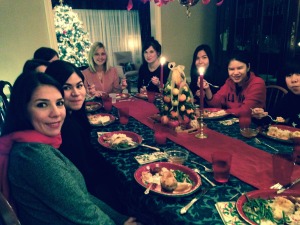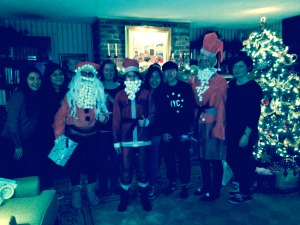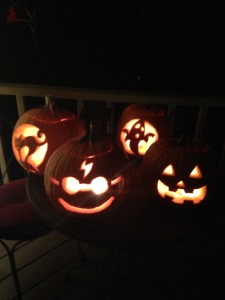Goblins and Ghosts stay safe!

- Make sure to inspect the children’s Trick Or Treat candy to make sure everything is in a sealed wrapper and appears safe.
- Small children should not eat hard candy because of chocking.
- Children should be supervised when they go Trick-or-Treating. Many parents will come home early from work on the day to go with their children. Check with Host Parents about this.
Halloween Safety Tips for Drivers
Halloween is a wonderful holiday, but because of increased foot traffic and that Trick-or-Treaters are out at night, the potential for automobile related accidents with young pedestrians increases four times on this night according to a CDC (Center for Disease Control) study.
Streets are literally crawling with all sorts of witches, ghosts, goblins, vampires and all other sorts of costumed people. This makes for added responsibility for drivers to make sure that they drive safer than normal.
In many areas, people drive their kids into subdivisions and let them out to walk from house to house. Usually the parent follows behind in the car. This can cause traffic jams in small areas and much confusion as kids dart between cars on the streets going from house to house. A driver is already distracted because they are trying to keep an eye on their own kids and usually aren’t paying attention to much else.
Children and adults tend to be preoccupied and may not pay as much attention to safety as they should. They may not see your vehicle or just assume that you see them automatically. Stay on the defensive and you shouldn’t have a problem while driving on Halloween night
* Don’t use a cell phone or other electronic device while driving on Halloween night. You shouldn’t be doing this anyway, the rate of cell phone related auto accidents has jumped dramatically since the use of cell phones and texting has risen so high. Some states have already made laws concerning this and others are working on it.
Make sure your child carries a flashlight, glow stick or has reflective tape on their costume to make them more visible to cars. Left them know if they carry a flash light to never shine itin the eyes of a driver. This can cause blindness on the drivers part temporarily and they may not see your child
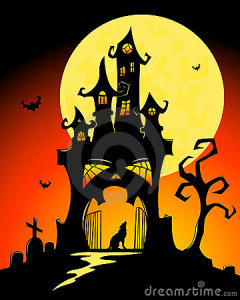 Haunted Happenings in October
Haunted Happenings in October
The month of October brings exciting activities to the city of Salem, Massachusetts. There are many activities relating to the city’s history and penchant for things macabre, including walking tours, haunted houses, trolley rides, spooky performances, exhibits, harbor cruiss and more. Visit their website for all the details: http://www.hauntedhappenings.org/
In Westford MA, visit Witches Woods http://witchswoods.com . Haunted Hayride and Halloween Screampark – open Thursday – Sunday nights 6:30-10:30.
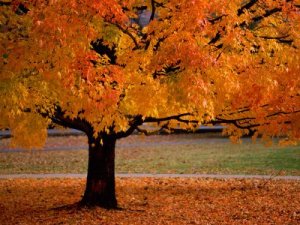 Fall is a magical time of year!
Fall is a magical time of year!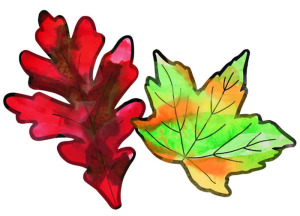



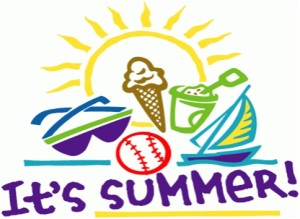
 On April 22, more than one billion people around the globe will participate in Earth Day 2012 and help Mobilize the Earth™. People of all nationalities and backgrounds will voice their appreciation for the planet and demand its protection. Together we will stand united for a sustainable future and call upon individuals, organizations, and governments to do their part.
On April 22, more than one billion people around the globe will participate in Earth Day 2012 and help Mobilize the Earth™. People of all nationalities and backgrounds will voice their appreciation for the planet and demand its protection. Together we will stand united for a sustainable future and call upon individuals, organizations, and governments to do their part.
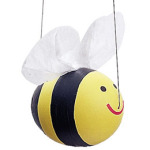
 Celebrate the arrival of spring by bringing this fuzzy critter to life.Begin by mixing 3/4 cup of potting soil and 2 tablespoons of grass seed in a bowl. Add water to moisten the mixture, then set it aside.Cut away a three-cup section of an egg carton, then trim the section along the longer edges so that your grassapillar will look the same from both sides. With a permanent marker, draw a face on one end as shown. Gently spoon the seed mixture into the cups.
Celebrate the arrival of spring by bringing this fuzzy critter to life.Begin by mixing 3/4 cup of potting soil and 2 tablespoons of grass seed in a bowl. Add water to moisten the mixture, then set it aside.Cut away a three-cup section of an egg carton, then trim the section along the longer edges so that your grassapillar will look the same from both sides. With a permanent marker, draw a face on one end as shown. Gently spoon the seed mixture into the cups.
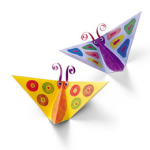 Origami Butterfly
Origami Butterfly This colorful creature is created not by metamorphosis but by folding the origami paper in half to form a triangle.
This colorful creature is created not by metamorphosis but by folding the origami paper in half to form a triangle. Fold the triangle in half again.
Fold the triangle in half again. Unfold the second triangle, then fold each side so that it crosses the center crease at a right angle.
Unfold the second triangle, then fold each side so that it crosses the center crease at a right angle. (Continuation of above directions.)
(Continuation of above directions.) Unfold. Glue on the strips for antennae and curl them using the edge of a scissor. Glue on the googly eyes and decorate with markers.
Unfold. Glue on the strips for antennae and curl them using the edge of a scissor. Glue on the googly eyes and decorate with markers.